It finally happened. This morning the European Central Bank actually pulled the trigger, launching an unfettered quantitative easing program, essentially creating new money and using it to buy government bonds. Here’s what you need to know.
First off, the European economy is in terrible shape.
Unemployment is, and has been, very high. It was 11.5% in November.
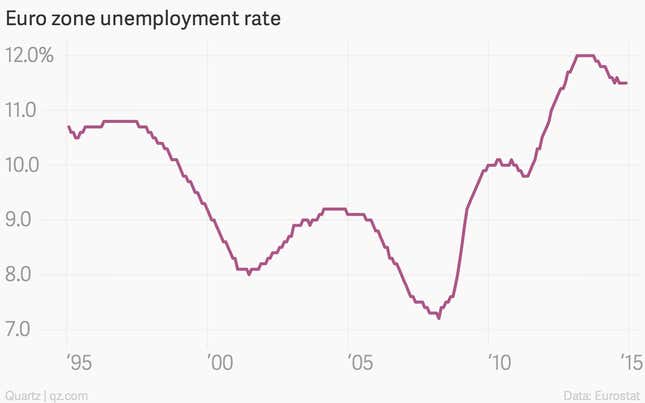
Growth has been feeble.
The euro zone’s GDP grew a scant 0.2% in the third quarter, compared to the prior three months.
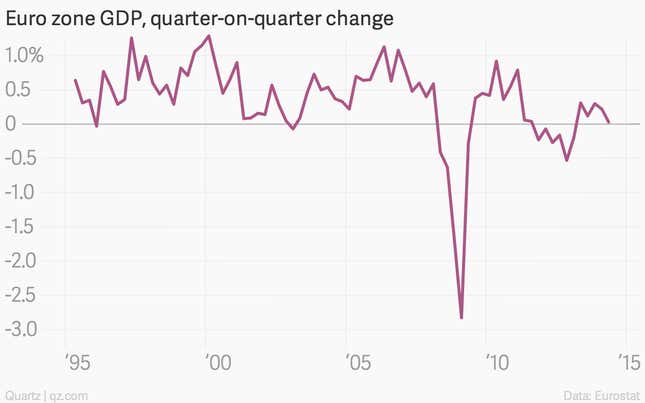
But it’s deflation that’s driving the ECB to act.
Prices are collapsing almost everywhere, and the monetary bloc as a whole is seeing falling prices.
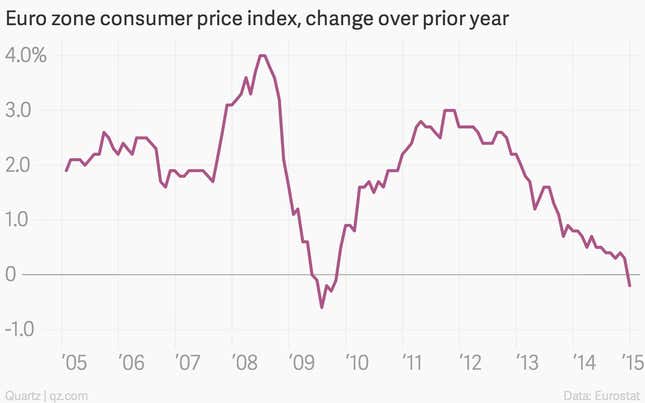
It’s about time.
Other central banks have been creating money like crazy—reflected in their ballooning balance sheets—while the ECB has done little to help growth.
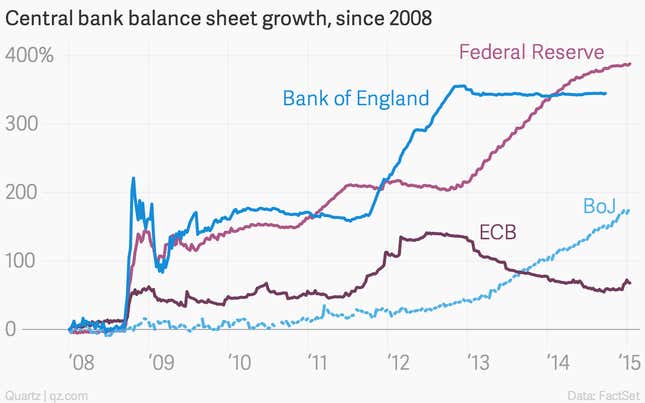
But that is about to change.
The ECB’s plans to expand its balance sheet by buying up to €1 trillion worth of bonds hammered government bond yields lower. (Bond yields fall as prices rise, which they did on the arrival of a new buyer with unlimited buying power.)
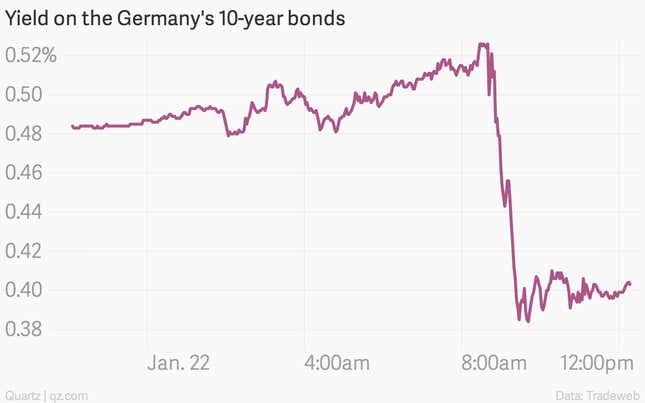
The euro also fell
Part of the way QE can help the economy is by lowering the exchange rate, which helps euro area exporters by making their goods cheaper to foreign buyers. The single currency hit an 11-year low against the dollar after the ECB’s announcement.
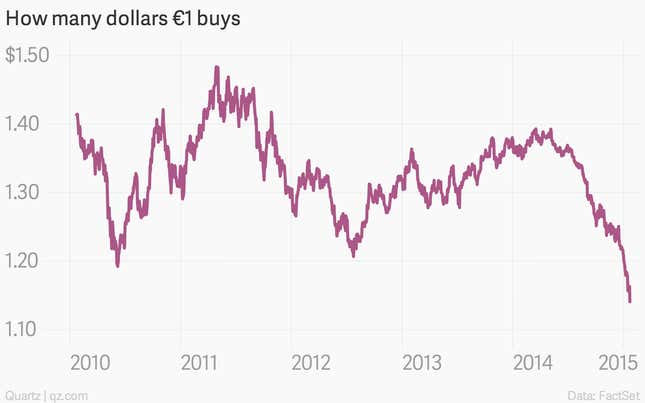
And stocks rose.
That suggests that investors are somewhat optimistic that the bond-buying program could help boost growth.
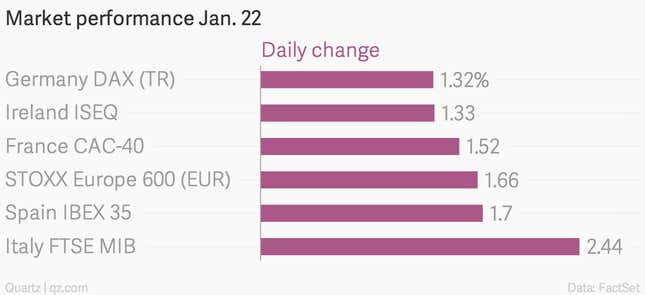
But will QE be a successful strategy for reinvigorating growth?
No one knows. Part of the way that QE is supposed to work is by driving down government bond yields, which is supposed to lower borrowing costs for companies. The problem is that European bond yields are already very low, even in countries that were considered quite risky during the worst of the European debt crisis. This is largely because of Mr. Draghi’s promise in July 2012 to do “whatever it takes” to ensure the survival of the currency.
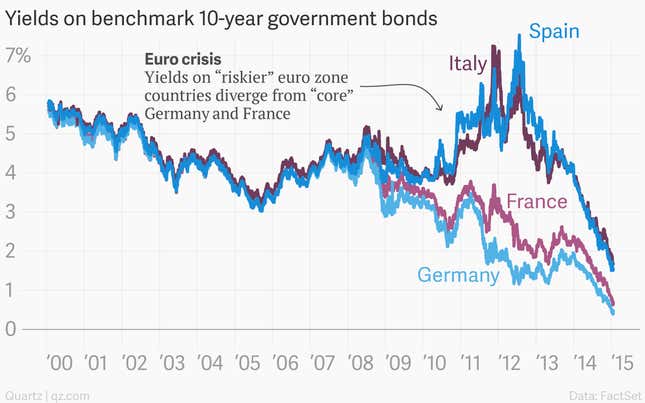
It’s all about the banks
The real key to understanding whether ECB QE works is the banking system. It’s the banks that will pass along the low bond market interest rates to companies. Bank lending to non-financial entities has been steadily shrinking in recent years. Like it or not, capitalism depends on the debt to finance future growth. If Europe’s banks don’t start lending, the economy won’t improve much.
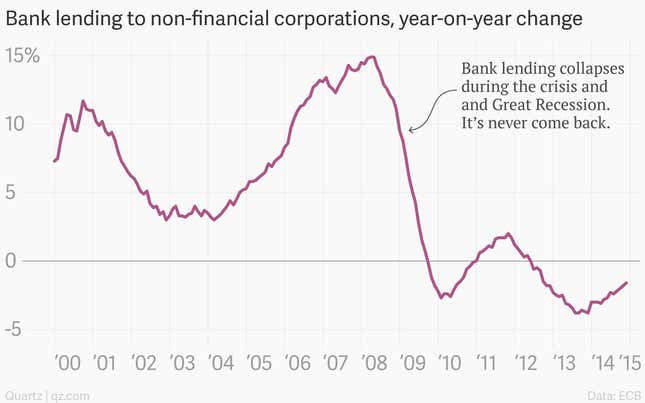
There is some reason for optimism
Survey data show European banks have recently started loosening credit standards for the first time since before the financial crisis struck.
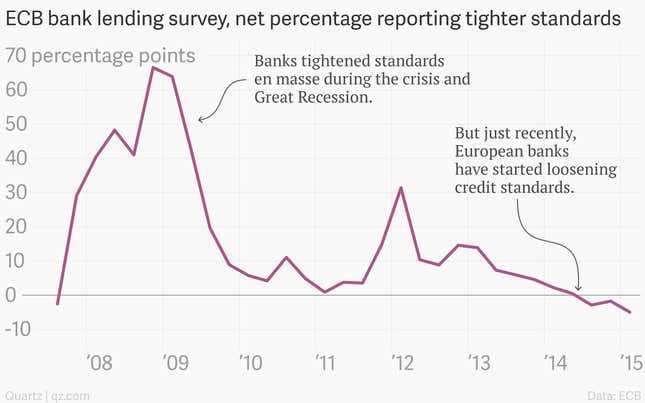
And yes, it’s a cliché, but it’s true
It really does come down to confidence. The blunt truth is that no one really knows how quantitative easing works. Sure, there are theories. It weakens the currency, boosting exports. It drives up the stock and housing markets, which boosts consumer confidence. It lowers interest rates, incentivizing borrowers. It generates some inflation, easing debt burdens. It monetizes government debt, enabling heavily debt-laden countries to borrow cheaply and—potentially—embark on otherwise unaffordable fiscal spending to juice growth. Sure! Why not. They’re all plausible.
But for my money, the most important channel through which quantitative easing works is the so-called “signaling” channel. Basically, this amounts to the central bank really convincing the markets that it means business. And that’s why the ECB’s announcement today was so important. Since July 2012, when ECB President Mario Draghi pledged to do “whatever it takes” to save the euro, the markets have wondered whether—when push came to shove—the ECB would be able to actually do what needs to be done. Today it showed it could. And that’s a very important milestone for the markets.




